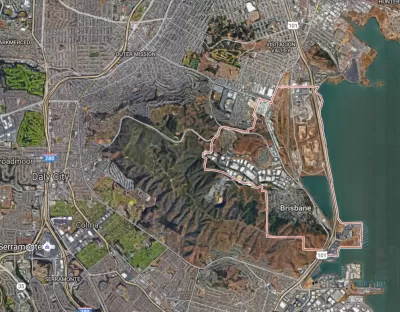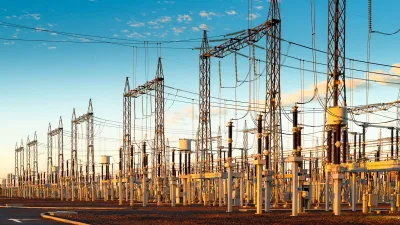Penny is an artificial intelligence program that detects affluence from space. It also lets users experiment with how different visual forms affect its perception of an area's wealth.

The patterns of urban wealth and poverty, apparently, are obvious enough for an AI to discern. Laura Bliss writes, "A joint collaboration between Stamen Design, DigitalGlobe, and Carnegie Mellon University, Penny is artificial intelligence that can 'read' satellite imagery of two very different cities and judge the income brackets of neighborhoods within them."
Focusing on New York and St. Louis, the program judges wealth from visual patterns alone, not from "knowing" how any building or feature is used. "The tool is meant to provoke conversation around a conclusion with scientific backing: Wealth is visible from space—and can be tracked as its contours invariably shift."
In the future, could AI help planners make better decisions? Or is it too inhuman an instrument? "Already, artificial intelligence is being used to help govern cities in certain contexts, such as predicting where traffic and crime might occur. How far into urban space should AI tread?"
FULL STORY: A Mapping Machine Identifies Wealth From Space

Planetizen Federal Action Tracker
A weekly monitor of how Trump’s orders and actions are impacting planners and planning in America.

Maui's Vacation Rental Debate Turns Ugly
Verbal attacks, misinformation campaigns and fistfights plague a high-stakes debate to convert thousands of vacation rentals into long-term housing.

San Francisco Suspends Traffic Calming Amidst Record Deaths
Citing “a challenging fiscal landscape,” the city will cease the program on the heels of 42 traffic deaths, including 24 pedestrians.

Amtrak Rolls Out New Orleans to Alabama “Mardi Gras” Train
The new service will operate morning and evening departures between Mobile and New Orleans.

The Subversive Car-Free Guide to Trump's Great American Road Trip
Car-free ways to access Chicagoland’s best tourist attractions.

San Antonio and Austin are Fusing Into one Massive Megaregion
The region spanning the two central Texas cities is growing fast, posing challenges for local infrastructure and water supplies.
Urban Design for Planners 1: Software Tools
This six-course series explores essential urban design concepts using open source software and equips planners with the tools they need to participate fully in the urban design process.
Planning for Universal Design
Learn the tools for implementing Universal Design in planning regulations.
Heyer Gruel & Associates PA
JM Goldson LLC
Custer County Colorado
City of Camden Redevelopment Agency
City of Astoria
Transportation Research & Education Center (TREC) at Portland State University
Jefferson Parish Government
Camden Redevelopment Agency
City of Claremont





























